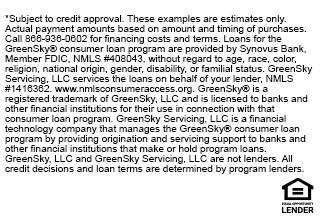12 Mar Homeowners Beware: Price of R-22 Refrigerant Through The Roof!!
Homeowners Beware!
If your home has an older air conditioning unit, it could use R-22 refrigerant. The EPA’s phaseout of R-22 will impact refrigerant availability and raise the price of adding refrigerant to your air conditioning system.
Here is some background on the phaseout of R-22, the ban on production and imports of ozone-depleting refrigerants:
In 1987 the Montreal Protocol, an international environmental agreement, established requirements that began the worldwide phaseout of ozone-depleting CFCs (chlorofluorocarbons). These requirements were later modified, leading to the phaseout in 1996 of CFC production in all developed nations. In 1992 the Montreal Protocol was amended to establish a schedule for the phaseout of HCFCs (hydro chlorofluorocarbons). HCFCs are less damaging to the ozone layer than CFCs, but still contain ozone-destroying chlorine. The Montreal Protocol as amended is carried out in the U.S. through Title VI of the Clean Air Act, which is implemented by EPA.
What does this mean to homeowners?
HCFC-22 (also known as R-22) had been the refrigerant of choice for residential heat pump and air-conditioning systems for more than four decades. Unfortunately for the environment, releases of R-22, such as those from leaks, contribute to ozone depletion. In addition, R-22 is a greenhouse gas and the manufacture of R-22 results in a by-product (HFC-23) that contributes significantly to global warming. As the manufacture of R-22 is phased out over the coming years as part of the agreement to end production of HCFCs, manufacturers of residential air conditioning systems are offering equipment that uses ozone-friendly refrigerants. Many homeowners may be misinformed about how much longer R-22 will be available to service their central A/C systems and heat pumps.
In 2012, U.S. government regulations began reducing production of the refrigerant known as R22 by 45 percent. This reduction caused the price of R22 to triple on Jan. 23, 2011. Since then the price of R22 refrigerant has continued to spike and will be felt by consumers with older A/C systems needing repairs requiring adding refrigerant. The price of R22 is only going to climb as we get closer to meeting the phasout of R22 by the year 2020. Every major air conditioner manufacturer in the United States has selected R-410A as its choice to replace R-22 in new equipment, and there are at least a dozen brands of R-410A air conditioners or heat pumps available today, with more coming soon.
The Clean Air Act does not allow any refrigerant to be vented into the atmosphere during installation, service, or retirement of equipment. Therefore, R-22 must be recovered and recycled (for reuse in the same system), reclaimed (reprocessed to the same purity standard as new R-22), or destroyed. After 2020, the servicing of R-22-based systems will rely solely on recycled or reclaimed refrigerants. It is expected that reclamation and recycling will ensure that existing supplies of R-22 will last longer and be available to service a greater number of systems. This may be optimistic as many HVAC companies are not reclaiming or recycling refrigerant (it’s much cheaper and easier to simply release the refrigerant into the atmosphere), so be sure your HVAC company is ethical and that their technicians are EPA Certified. Also, many older systems have significant refrigerant leaks, and many unethical HVAC companies are comfortable simply adding r-22 over and over as needed, with disregard to the damage the escaping refrigerant does to the atmosphere.
A Common Sense Approach To Servicing Your System
Along with prohibiting the production of ozone-depleting refrigerants, the Clean Air Act also mandates the use of common sense in handling refrigerants. By containing and using refrigerants responsibly — that is, by recovering, recycling, and reclaiming, and by reducing leaks — their ozone depletion and global warming consequences are reduced. The Clean Air Act outlines specific refrigerant containment and management practices for HVAC manufacturers, distributors, dealers and technicians. Properly installed home comfort systems rarely develop major refrigerant leaks, and with proper servicing, a system using R-22, R-410A, or another refrigerant will reduce its impact on the environment. While EPA does not mandate repairing or replacing small systems because of leaks, system leaks can not only harm the environment, but also result in increased operation and maintenance costs.
One important thing a homeowner can do for the environment, regardless of the refrigerant used, is to select a reputable HVAC company that employs service technicians who are EPA-certified to handle refrigerants. Be sure that your HVAC company recovers and recycles refrigerants as mandated by the EPA.
A Common Sense Approach To Purchasing a New System
Along with the assurance your new system utilizes a more environmentally friendly refrigerant, another important thing a homeowner can do for the environment is to purchase a highly energy-efficient system. Energy-efficient systems result in cost savings for the homeowner. Today’s best air conditioners use much less energy to produce the same amount of cooling as air conditioners made in the mid-1970s. Even if your air conditioner is only 10 years old, you may save significantly on your cooling energy costs by replacing it with a newer, more efficient model. Products with EPA’s Energy Star® label can save homeowners 10% to 40% on their heating and cooling bills every year.
For more info, go to http://www.epa.gov/ozone/title6/phaseout/22phaseout.html








Sorry, the comment form is closed at this time.